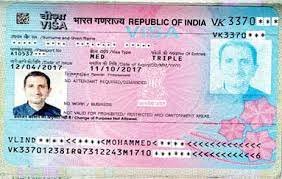Navigating the Timeline: How Long Does Credit Repair Really Take?
Embarking on a journey to repair your credit is a proactive step toward financial well-being. However, understanding the timeline involved is crucial for managing expectations and staying motivated throughout the process. This guide provides insights into the various factors that how long does it take to repair credit and offers realistic timelines for different stages of the journey.
Setting Realistic Expectations
Understanding the complexities of credit repair and setting realistic expectations is the first step toward a successful and stress-free journey. The time it takes to repair credit varies for each individual, depending on several factors.
Assessing the Initial Credit Analysis
Timely Credit Report Retrieval
The initial phase involves obtaining your credit reports from major bureaus. This step typically takes a few days to a week, depending on the method of retrieval. Online platforms often provide quicker access.
Efficient Credit Analysis
Conducting a thorough analysis of your credit reports is crucial for identifying inaccuracies. This stage may take a couple of weeks, depending on the complexity of your credit history.
Initiating Dispute Resolution
Rapid Dispute Letter Crafting
Crafting dispute letters efficiently can expedite the initiation of the dispute resolution process. This step usually takes a few days, depending on how promptly you can gather supporting documentation.
Credit Bureau Response Time
The Fair Credit Reporting Act (FCRA) mandates that credit bureaus must investigate and respond to disputes within 30 days. However, some disputes may take longer, especially if they are complex or require additional documentation.
Regular Follow-Ups
Staying proactive and following up on your disputes regularly can help move the process along. This ongoing effort may extend the overall timeline, but it’s essential for a successful outcome.
Managing Outstanding Debts
Debt Repayment Strategies
Prioritizing and repaying outstanding debts can take months or even years, depending on the amount and your financial situation. Developing a sustainable repayment plan is crucial for long-term success.
Negotiating Settlements
Negotiating settlements with creditors may also extend the timeline, as it involves communication, agreement, and sometimes legal documentation. This step can take several weeks to months.
Rebuilding Positive Credit History
Secured Credit Card Impact
Obtaining a secured credit card for rebuilding positive credit history can yield results within a few months. Consistent, responsible use of the card can lead to noticeable improvements.
Authorized User Status
Being added as an authorized user on someone else’s credit account can have an immediate impact, but the long-term benefits depend on the account holder’s credit behavior.
Monitoring Progress
Real-Time Credit Monitoring
Utilizing credit monitoring tools allows you to track changes to your credit score in real-time. Regular monitoring is essential for staying informed and adjusting your strategy as needed.
Patience and Persistence
Credit repair is a gradual process that requires patience and persistence. While some improvements may be seen in a matter of weeks, significant changes often take several months or even years.
Conclusion
The duration of credit repair is influenced by various factors, including the complexity of your credit history, the efficiency of dispute resolution, and your debt management strategies. Setting realistic expectations, staying proactive throughout the process, and leveraging monitoring tools are key elements for a successful credit repair journey. Remember, the goal is not just to achieve a better credit score but to cultivate long-term financial health.







